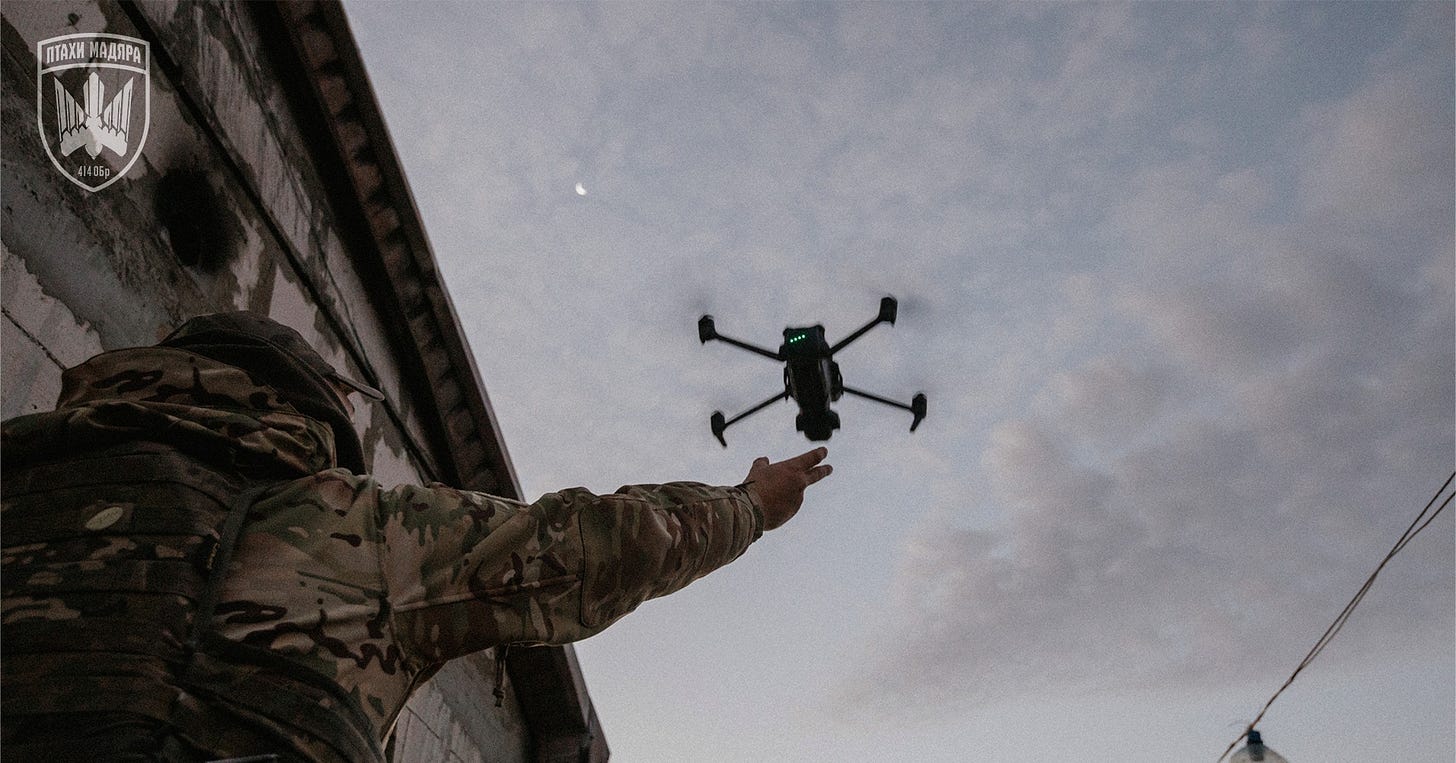Drone warfare in Ukraine: the Drone Line project and decentralized drone procurement
Three key stories of the week: Apr. 30 - May 6, 2025.

The Commander of the Madyar’s Birds, Ukraine's most successful UAV-operating unit, predicted that combat operations could be conducted almost exclusively by drones as early as this summer. That is why the Drone Line project, aimed at creating a killzone on the frontline, is in the spotlight in my current newsletter. Additionally, through several stories and interviews, I will show how Ukraine’s drone procurement system is shifting directly to military units, which can now select the UAVs themselves, while the state simply covers the cost. Notably, the price of drones is also decreasing, making this transformation even more impactful.
Thank you for reading and supporting my work!
The Drone Line project: what is it, and can five units stop the Russian advance?
In February 2025, President Zelensky announced his initiative to launch the Drone Line project. Only now are more details beginning to emerge about the initiative. The Drone Line will unite the efforts of Ukraine’s five most effective UAV-operating units to create a killzone using unmanned technologies along the entire frontline.
The kill zone is a 50-kilometer-deep area divided into sectors: 5–10 km, 10–15 km, 10–20 km, and 20–50 km, Ukrainska Pravda reports.
At a depth of 5 kilometers, there should be no enemy presence at all — the entire area will be mined. At the 10-kilometer mark, enemy logistics are targeted and destroyed; at 15 kilometers, their artillery is taken out. Throughout the operation, reconnaissance units are active, constantly searching for the enemy’s logistical hubs.
The Drone Line project aims to scale the experience of the five most successful UAV-operating units:
Rarog regiment;
K-2 regiment;
Achilles regiment;
Madyar’s Birds brigade; and
Phoenix battalion.
The "Drone Line" emerged as a result of the digitalization of a new type of warfare. It began with the implementation of the situational awareness system "Delta" in the Armed Forces. Later, based on this system, the "Army Bonus" project was launched within the Defense Forces, allowing for the collection of data on enemy target strikes and identifying the most effective units.
Those five high-performing units were identified through the efficiency ranking, and then selected to take part in the Drone Line project.
At the front, the enemy can only advance where it manages to break through weaker units. The task of the "Drone Line" is to serve as a "second line" positioned behind these weaker infantry units, thereby helping to hold the frontline.
Over time, each unit within the Drone Line is expected to operate on a fixed section of the front. This will allow the regiments, first, to fight from well-prepared positions, and second, to gain a deep understanding of the enemy and deliver systematic fire damage.
It is likely that the Drone Line units will not be stretched across the entire 1,200 kilometers of the active frontline but will instead be deployed in a concentrated manner to the most difficult sectors — namely, the Kharkiv, Luhansk, and especially Donetsk regions.
The Drone Line project has already received a budget of $111.4 million from the Ministry of Defense, with the funds to be distributed directly among the units to procure UAVs, EW systems, and vehicles based on their needs. With the launch of the Drone Line, all five units began to expand. Their logistics and supplies improved — they received additional funding from the state budget: 4 billion UAH per regiment, and 6 billion UAH for "Madyar’s Birds." Ammunition supply and personnel recruitment have also changed. While the standard basic military training lasts 45 days, for these units it has been shortened to 30.
According to Ukrainska Pravda sources, the tentative deadline for the full-scale launch of the project is the end of 2025.
Last weekend, my article on the Drone Line was published by the reputable outlet Counteroffensive.Pro. In it, among other topics, I discuss the challenges this project faces. A current concern raised by frontline infantry units is the loss of qualified personnel, who are being recruited into elite UAV-operating regiments and brigades. This directly impacts the ability of those infantry units to operate effectively.
Vyriy Drone CEO on Ukraine’s FPV production trends, localization, and decentralized procurement
Oleksii Babenko, co-founder of Vyriy Drone, the company that released the first “100% Ukrainian” drone, spoke to UNIAN about the latest trends in drone manufacturing.
In March 2025, Vyriy Drone produced the first batch of one thousand fully Ukrainian-made FPV drones as part of a special project.
Keep reading with a 7-day free trial
Subscribe to Ukraine's Arms Monitor to keep reading this post and get 7 days of free access to the full post archives.



